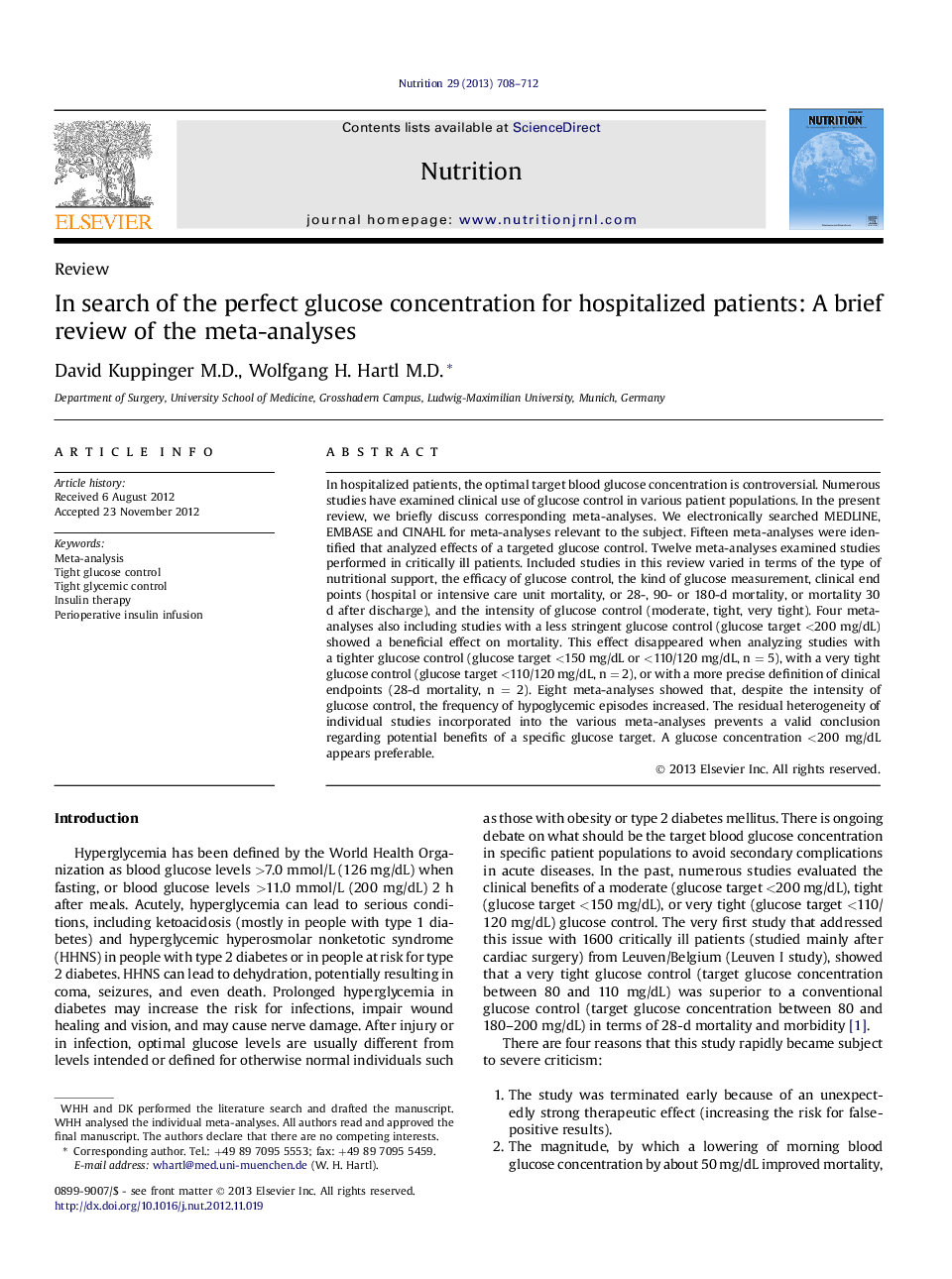| Article ID | Journal | Published Year | Pages | File Type |
|---|---|---|---|---|
| 6090181 | Nutrition | 2013 | 5 Pages |
In hospitalized patients, the optimal target blood glucose concentration is controversial. Numerous studies have examined clinical use of glucose control in various patient populations. In the present review, we briefly discuss corresponding meta-analyses. We electronically searched MEDLINE, EMBASE and CINAHL for meta-analyses relevant to the subject. Fifteen meta-analyses were identified that analyzed effects of a targeted glucose control. Twelve meta-analyses examined studies performed in critically ill patients. Included studies in this review varied in terms of the type of nutritional support, the efficacy of glucose control, the kind of glucose measurement, clinical end points (hospital or intensive care unit mortality, or 28-, 90- or 180-d mortality, or mortality 30 d after discharge), and the intensity of glucose control (moderate, tight, very tight). Four meta-analyses also including studies with a less stringent glucose control (glucose target <200 mg/dL) showed a beneficial effect on mortality. This effect disappeared when analyzing studies with a tighter glucose control (glucose target <150 mg/dL or <110/120 mg/dL, n = 5), with a very tight glucose control (glucose target <110/120 mg/dL, n = 2), or with a more precise definition of clinical endpoints (28-d mortality, n = 2). Eight meta-analyses showed that, despite the intensity of glucose control, the frequency of hypoglycemic episodes increased. The residual heterogeneity of individual studies incorporated into the various meta-analyses prevents a valid conclusion regarding potential benefits of a specific glucose target. A glucose concentration <200 mg/dL appears preferable.
